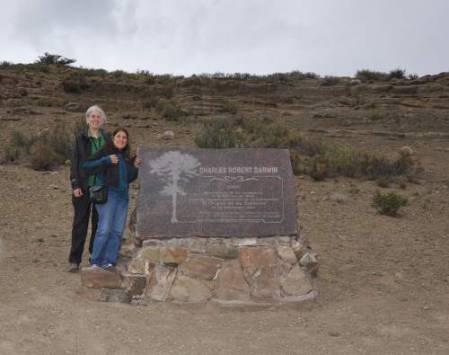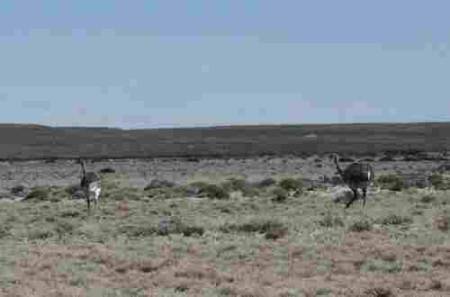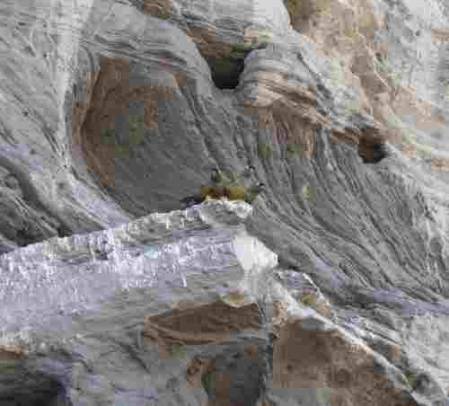When we arrived in Las Leñas late at night it had been raining and there was no mobile signal – in the morning it was restored and we received several worried calls from Mendoza, there had been landslides in the mountains on the road to Chile and since we hadn’t been heard from people were concerned! We had been blithely unaware, but decided to watch the weather as we collected.
From Las Leñas we were headed for the Valle Hermosa – beautiful valley – a place right near the border with Chile. This area is where the plane crash about which the movie “Alive” was made – the survivors were not far from civilisation in Argentina, but thought they were closer to Chile and walked for days in the high Andes. The mountains are beautiful, but dangerous. We left our things in the hotel, and told them we would be back at noon or so to collect them and carry on back to Mendoza….
The high Andes in central Argentina are very dry, above about 2500 metres elevation there is little or no vegetation; in winter these slopes will be completely snow-covered
As we drove up the valley, it was apparent that the rains had fallen and the vegetation was greener than I had seen for a long time. Patagonia had been so dry, but here it was almost lush, as dry deserts go. Crossing a small stream on the road, we found the first excitement of the day – Schizanthus grahamii – a plant I knew well from gardens but had never seen in the wild before. It was all over the banks of the stream, and individual plants varied a lot in flower colour, from pale to very deep pink.
The flowers of Schizanthus (sometimes called butterfly flower or poor-man’s orchid) are highly asymmetrical, with one large upper petal usually a different colour than the rest; in this species the upper petal is orange and the side petals pink
The pass into Valle Hermosa is at about 2700 metres elevation, and the view is spectacular. The valley is glacial in origin, and has been further sculpted by the rivers that run through it. We got someone to take our photo at the top with the valley behind! This valley is famous for its fly fishing, people come from all over to fish in the rivers; our photo was taken by the guide who was taking a presenter from a Brazilian fishing TV channel around the region.
The Mendoza team, from left to right Iris Peralta, me, Gualberto Salazar and Pablo Molina – Gualberto and I are leaning apart to show the lake!
Fishing streams in Valle Hermosa
The bottom of the valley is flat and rocky, again with the sand beneath, a perfect habitat for the Portulacaceae Iris was searching. She had collected there before, so this trip was really not to find new things for her, but for her to show Pablo how to collect and recognise these tiny little plants. And they were tiny and hard to find!
This is an annual species of Montiopsis that was growing in places where water had been standing but now dried out, on very loose sandy soil. The flowers were less than a millimetre in diameter – minute!
The flowers of these purslanes only open at midday – once they are open they are pretty easy to see, this species Montiopsis gilliesii (named for Gillies the Scottish botanist!) has bright pink flowers that are held flat against the ground, when the fruits begin the develop the stem stands erect and they are held up high. Who says plants don’t behave!!
We stopped to have lunch at the lake overlooked by Cerro Torrecillos (little towers, what a good name!), but they wanted to charge us 10 pesos to sit there, so on we went. By this time the skies were getting dark and we began to hear thunder from the mountains to the west.
Bearing in mind that there had been landslides we decided to return ….... first stopping at the pass to collect the purslanes that were now in full flower. The clouds billowed, and the thunder rolled – there was definitely a storm on the way! The extraordinary thing was that people in city cars were attempting the descent into the valley – let’s hope they didn’t end up stuck there! The road was definitely not for city cars……
Iris, Gualberto and Pablo racing around on the pass collecting as the storm rolled in
We got back to where we had left our things at 5 pm (a bit later than the noon we predicted!!) gathered all together and headed down the valley. We stopped at the Pozo de Animas, where we found another mixed population of tobaccos, this time Nicotiana linearis and Nicotiana corymbosa; the latter species we had also seen high up in the mountains – it has a huge distributional range and grows in many different vegetation types.
The Pozo de Animas (Well of Souls) is a natural feature of this karstic landscape formed by the collapse of rock above an underground cave created by water eating away the limestone. The hole is perfectly circular and the water is VERY deep
We arrived back in Mendoza at 11:30 pm, and discovered why everyone was a bit worried about us up in the mountains! The landslides near Uspallata, where we had been a few days before, were huge and had blocked the road to Chile in at least six places. One slide was almost a kilometre across and several metres deep – the clean-up was predicted to take days….. fortunately no one was hurt, but hundreds of people were trapped. We had been lucky to go up the road in full sun and to see the mountains in all their glory before these unusual rains set in!





